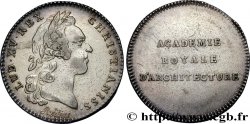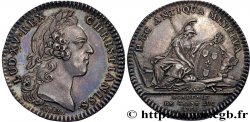正面
正面的说明书 Buste de Minerve à droite signé DUBOIS.
背面
背面的文字 STE FSE DE THERAPEUTIQUE ET DE PHARMACOLOGIE CLINIQUE / PROFESSEUR H. SCHMITT / PRESIDENT / 1983.
评论
历史细节
ACADEMIES AND LEARNED SOCIETIES
In the 17th and 18th centuries, the academies and learned societies contributed to the influence of science, arts and literature throughout France and abroad.. They allow the dissemination of knowledge, then the ideas of the Enlightenment, and include in their ranks the most influential personalities in their field, responsible, among other things, for training future creators and scholars.. In the provinces, they constitute the essential elements of social and cultural life.. They bring together "great" and "beautiful" minds (men of letters, artists and scientists), and are endowed with official institutions (legal and material structures) which ensure their permanence, stability and legitimacy.. They are established by letters patent of the King, and most often placed under the protection of the latter.. Let us cite as an example the Academy of Sciences, Belles-Lettres and Arts of Rouen, created in June 1744 by letters patent of Louis XV. Previously, there were already meetings of botanic friends who formed an unofficial academy. Two men actively worked for the official recognition of this academy: Fontenelle, godfather of the Academy and Le Cornier de Cideville, classmate and friend of Voltaire.. Many members of this Academy are famous: Chardin, Pigalle, Parmentier, Necker, Victor Hugo or Abbé Cochet.. Reading tips: BARRIERE P. , "The Academy of Bordeaux, center of international culture in the 18th century (1712-1792)", Bordeaux, 1951; COUSIN J. , "The Academy of Sciences, Literature and Arts of Besançon" (1752-1952), Besançon, 1954; TAILLEFER M. , "An Academy Interprets Enlightenment. The Academy of Sciences, inscriptions and belles-lettres of Toulouse in the 18th century", Paris, 1984.








 对产品描述纠错
对产品描述纠错 打印
打印 分享我的选择
分享我的选择 提问
提问 Consign / sell
Consign / sell
 产品介绍
产品介绍










